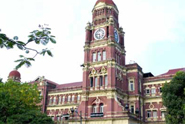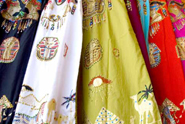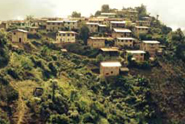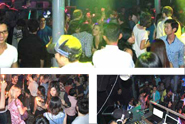A Tour of Yangon’s Architecture
Yangon’s Strand Road was once one of the most important roads in the whole of British India. Here, merchants, businessmen and members of the British Army would arrive, weary after months of travel from their homeland. Some would stay in the then capital city, while many would venture into the deep jungles to explore the country and her rich resources that continue to attract people today.
New arrivals fresh off the boat would have been instantly met by the domineering structures of the Royal Law Courts, the Port Authorities and the offices of the Burmah Oil Company – which would later become British Petroleum. The buildings remain to this day, some in varying states of disrepair.
The wide, boulevard-like Pansodan Road was an important thoroughfare in the city, too, and to each side the impressive structures from the British days remain. Some have fallen into such a poor state that it’s difficult to see how they can be restored, while others have been well looked after and continue to function as offices today.
Yangon – then Rangoon – only really came to prominence after the British took over the country in 1886, making it a province of British India. Burma, as it was known, was until then a Royal Kingdom. King Thibaw and his Queen Supayalat ruled from their golden palaces in then capital Mandalay, but when British troops stormed into the city and ousted him and his wife to some quiet corner of Western India, Burma came under British rule and they moved the capital city to Yangon in order to take advantage of the city’s close proximity to the sea.
So began the complete transformation of the city. Until that point, Sule Pagoda sat virtually alone in the middle of a dense forest, but the British decided to use it as a physical centre point and built some impressive structures around it. Fytch Square (now Mahabandoola Park) was built to the south, to the north the prominent City Hall and to the southeast the beautiful redbrick High Court.
The redbrick structures were strong representations of British architecture at the time, with the most notable being built slightly further east on what is now Bo Aung Kyaw Road, the Ministers’ Building (now known as the Secretariat).
The Secretariat has a special place in the hearts of the people of Myanmar. Completed in 1905, the British used it as their central parliament until they left, and it was in a small room here that the country’s independence hero, Bogyoke Aung San (father of democracy icon Aung San Suu Kyi), was murdered alongside seven of his associates by a jealous political arrival. Each year, on the anniversary of the murders – July 19th – Martyrs’ Day is celebrated across the country.
Today, the building is heavily guarded by high fencing and, despite a few glimpses here and there, it is difficult to get a real feeling of the building. This may change in the near future as it was recently announced that companies have submitted proposals to turn the site into a cultural centre and museum – it is hoped by many that authorities will choose this option for the historical building, rather than the predictable hotel or shopping complex.
While British architecture is certainly the most prominent in the former capital, what is most impressive about the city is its range of architecture. All across town, modern, glass front office blocks and condominiums sprout up, but the city is still dominated by the more traditional aspects of Asian architecture, mixed in with further influences from abroad.
A little known synagogue sits in the middle of the city’s downtown area. Built in 1896, while still under British rule, the Musmeah Yeshua Synagogue was built for the increasing number of Jews that were arriving from the Middle East region.
Once home to 2,500 Jews, many left during the brief Japanese occupation during WWII. Today, there are around 20 permanent Jewish residents in the city, but with an increasing number of visitors coming from abroad – both to live and visit – the synagogue is attracting an increasing number of worshipers.
Little known, too, is the Armenian influence, and it was two brothers – the Sarkys Brothers – from this region that built one of Yangon’s most prominent structures, The Strand Hotel, which was completed in 1901 and has checked in famous names including Somerset W Maugham, Mick Jagger and Oliver Stone.
A great number of Armenians emigrated across the Asian continent in the 17th and 18th centuries and, by the 19th century, many of those ended up in the country that we today know as Myanmar.
The Armenian Apolistic Church of St. John the Baptist is the most prominent Armenian structure that still stands today and attracts a few tourists thanks to its unique design. Completed in 1862, it is located on Bo Aun Kyaw Road, close to the Secretariat Building.
Add to these heavy influences from Central Asia, China, Hindu temples and traditional Burmese culture, and you find yourself in a city that offers as unique a mix of architecture as any city in the region.
The challenge now, as the city attracts unprecedented foreign interest and investment, is to ensure that these impressive structures are maintained. It goes without saying that some will fall foul. Some will deservedly be hauled down due to safety concerns, but what the government must ensure is that those that can remain standing are allowed to do so.
One Yangon citizen recently referred to the practice of “cultural genocide”, meaning that if structures that say so much about a city’s culture and history are torn down to make way for more generic modern structures, then that aspect of the city’s past could be lost forever.
The Yangon city planners must ensure that, as the city changes, this does not happen.
















